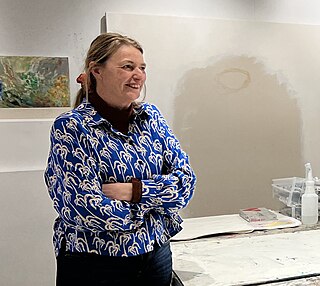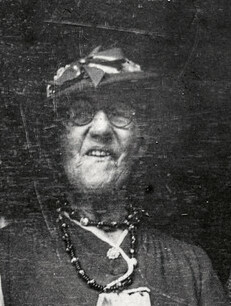Related Research Articles
The Frances Hodgkins Fellowship, established in 1962, is one of New Zealand's premier arts residencies. The list of past fellows includes many of New Zealand's most notable artists.
The Louis Comfort Tiffany Foundation was founded in 1918 by Louis Comfort Tiffany to operate his estate, Laurelton Hall, in Cold Spring Harbor, Long Island. It was designed to be a summer retreat for artists and craftspeople. In 1946 the estate closed and the foundation changed its purpose from a retreat to the bestowing of grants to artists.
Linda Mary James is an established artist who has been working in New Zealand for over twenty-five years. She creates large figurative paintings and landscapes.

The Arts Foundation of New Zealand Te Tumu Toi is a New Zealand arts organisation that supports artistic excellence and facilitates private philanthropy through raising funds for the arts and allocating it to New Zealand artists.

William Alexander Sutton was a New Zealand portrait and landscape artist.

Doris More Lusk was a New Zealand painter, potter, art teacher, and university lecturer. In 1990 she was posthumously awarded the Governor General Art Award in recognition of her artistic career and contributions.

Catherine Olivia Orme Spencer Bower was a New Zealand painter. Born in England, she spent her adult life in New Zealand, mostly in Christchurch.

Fiona Dorothy Pardington is a New Zealand artist, her principal medium being photography.
Areta Rachael Wilkinson is a New Zealand jeweller.
Saskia Leek is a New Zealand painter.

Séraphine Pick is a New Zealand painter. Pick has exhibited frequently at New Zealand public art galleries; a major survey of her work was organised and toured by the Christchurch Art Gallery in 2009–10.
The Rita Angus Residency in Wellington, New Zealand, is an opportunity for artists to live in the former home of Rita Angus, one of New Zealand’s best-known painters, while creating a body of new work.
The Group was an informal but influential art association formed in Christchurch, New Zealand in 1927. Initially begun by ex-students from Canterbury College of Art, its aim was to provide a freer, more experimental alternative to the academic salon painting exhibitions of the Canterbury Society of Arts. The Group exhibited annually for 50 years, from 1927 to 1977, and it was continuously at the forefront of New Zealand art's avant-garde scene.
Ivy Grace Fife (1903–1976), born Ivy Grace Hofmeister, was a New Zealand painter based in Christchurch and Canterbury. Known for her portraits, her work also includes landscapes and is reflective of life in Canterbury and the South Island of New Zealand.
Joanna Braithwaite is a New Zealand painter. Braithwaite has been interested in exploring exchanges between people and animals since studying at the School of Fine Arts, in Canterbury in the mid-1980s. She has said her work has always tended toward the autobiographical, so what is happening in her environment creeps into the work.
Joanna Langford is a New Zealand artist, born in Gisborne, New Zealand.

Agnes Rosa Marion Spencer Bower was a New Zealand watercolour artist. Her work is included in the permanent collection of Museum of New Zealand Te Papa Tongarewa.
Miranda Parkes is a New Zealand painter and multi media artist based in Christchurch, New Zealand. Parkes' works are held in the collections of the Sarjeant Gallery and the Arts House Trust.
The Brooke Gifford Gallery was a dealer art gallery focusing on contemporary New Zealand art that opened in Otautahi Christchurch, Aotearoa New Zealand in 1975. It was run by Barbara Brooke and Judith Gifford and closed in 2011.
References
- ↑ "Olivia Spencer Bower Foundation" . Retrieved 7 March 2015.
- 1 2 Daly-Peoples, John (17 November 2009). "Auckland sculptor wins Canterbury art prize". National Business Review. Retrieved 7 March 2015.
- 1 2 Feeney, Warren (3 March 2015). "Fitts on Spencer Bower". Eye Contact. Retrieved 7 March 2015.
- ↑ Wood, Andrew Paul (26 October 2009). "Clare Noonan show in Christchurch" . Retrieved 7 March 2015.
- ↑ Moore, Christopher (7 December 2012). "Chch artist wins $30,000 prize". Stuff.co.nz. Retrieved 7 March 2015.
- ↑ "2015 Olivia Spencer Bower Foundation award winner". Ministry for Culture and Heritage. 31 October 2014. Retrieved 22 March 2015.